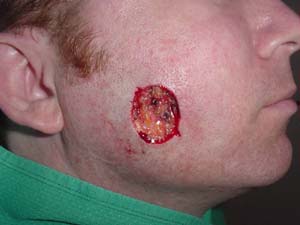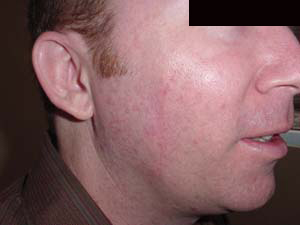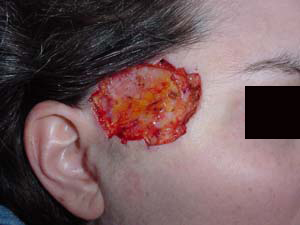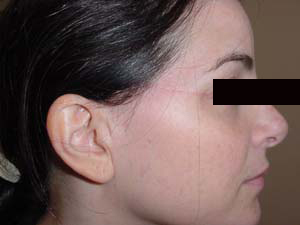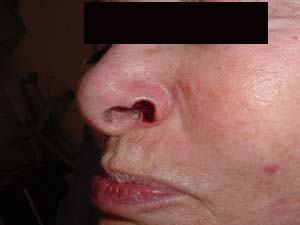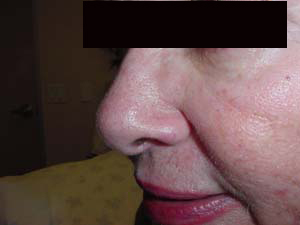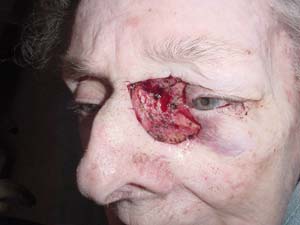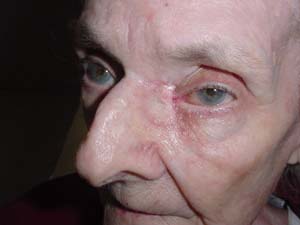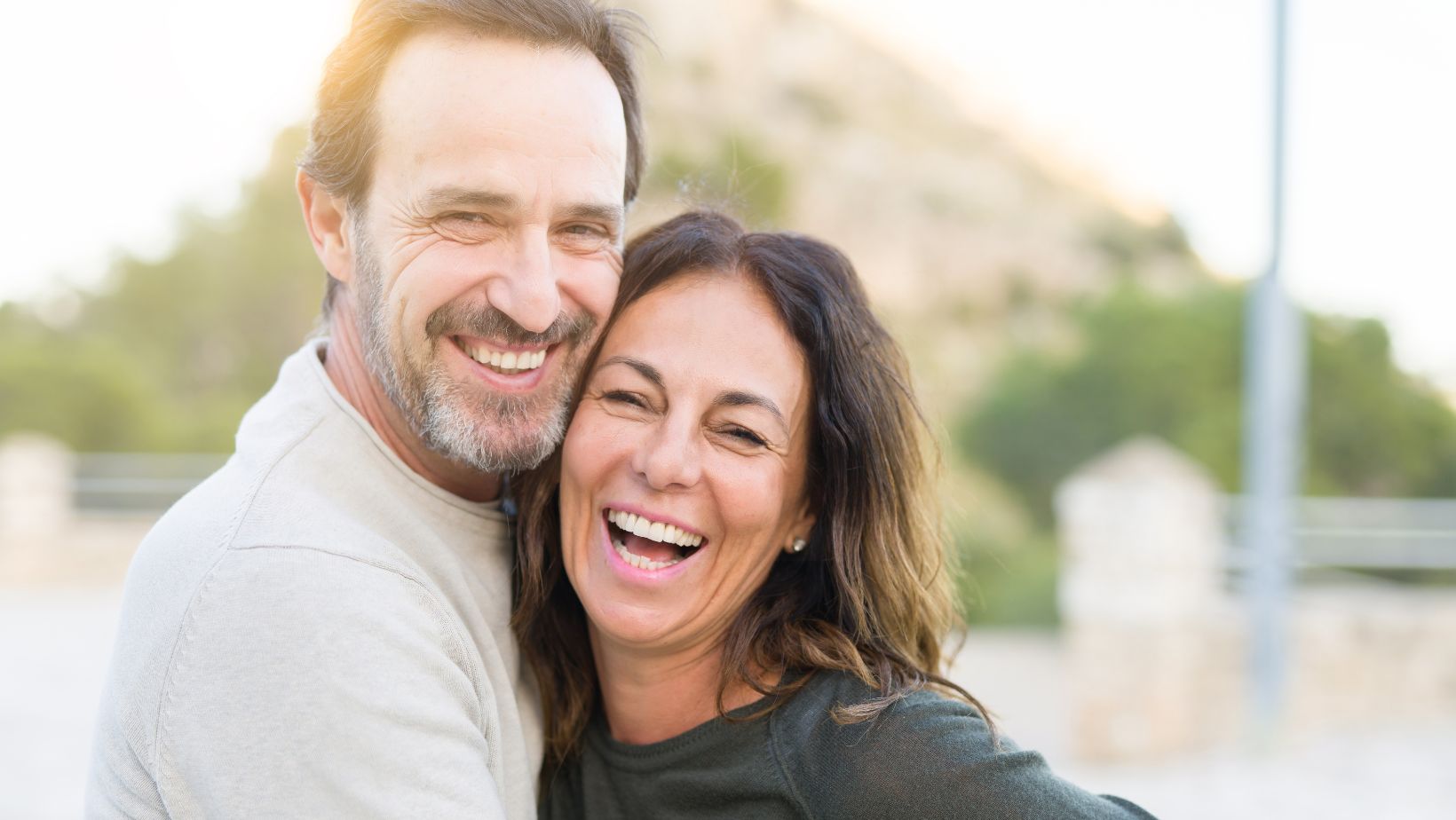Reconstructive Surgery
Reconstructive Surgery
Ralph A. Massey, MD Santa Monica & Encino, CA

Once skin cancer has been removed the area needs to be reconstructed. There are a variety of methods for repairing these defects. Having performed over 20,000 reconstructive surgeries Dr. Massey can help guide you as to what form of reconstruction is best suited for you. See examples of various reconstructions performed by Dr. Massey below.
Before & Afters
Simple Linear Repair
This involves closing the defect as a thin straight line of sutures. The positioning of this line, undermining to release tissue from the wound, and placement of internal as well as external sutures are all important factors in how it will heal and the final cosmetic result.
Local Flaps
With local flaps, releasing cuts are made in the surrounding skin to allow the skin to be pulled over the wound, rather than closing a curtain. (As this uses local skin the flap will usually blend into the surrounding skin better than a graft will).
Interpolation Flaps

Sometimes skin immediately adjacent to the wound can not be used, and a more distant flap is used. In the first phase, skin is recruited from a donor area and sutured into the defect while it is still attached to its original blood supply. This is a temporary phase lasting two or three weeks. After a few weeks, enough new blood vessels have grown into the flap from the surrounding tissue that it no longer needs the connection to its original blood supply. So in the second phase of this surgery, the bridge of skin connecting the flap to its site of origin is removed and the flap is now fully in place. While this is a complex and lengthy process to go through, for certain defects it will give the best cosmetic results.
Skin Graft
When flaps are not a good option grafts can often be used. The skin a removed from a relatively hidden location, such as behind the ear, and sutured over the defect, (rather like a patch on a hole in your pants!). Over the next few days, new blood vessels grow into the graft and so keep it alive. The final cosmetic results can be excellent, but because the graft is from a more distant location and has no blood supply of its own, the results are a little less predictable.
The best method of reconstruction will depend upon several factors including;
- Size of the defect, (small defects can usually be repaired in a simpler fashion than larger ones).
- Location, (the reconstructive choices may be different for a lesion on the tip of the nose as opposed to the lower leg for example).
- The amount of mobility in the surrounding skin, (in general the more laxity in the surrounding skin the easier it is to repair a defect).
- Other local structures, (the need to avoid pulling down on the eyelid when repairing a defect on the cheek for example may direct your reconstructive options).
- Patient preferences, (some patients may prefer a quicker simpler repair rather than a more involved reconstruction that might otherwise give a better overall cosmetic result).
“This could not have been a more pleasant experience, given the circumstances. I had complete confidence in Dr. Massey’s knowledge, surgical judgement and aesthetic sensibility for the plastic surgery required. His bedside manner was calm and reassuring, the surgical staff was extremely competent and the front office was extremely helpful in scheduling my appointments. Can’t recommend him highly enough!”
by Barbara B.Reconstructive Surgery Cost
The total cost of reconstructive surgery is determined based on factors like your medical examinations, surgeon’s fees, hospital charges, post-surgery garments, and anesthesia. The exact techniques used will also impact cost, as will the total time needed to perform the surgery.
Schedule a Consultation
Interested in learning more about reconstructive surgery in Santa Monica? Contact us today to schedule an appointment with Dr. Massey. We look forward to offering compassionate treatment and excellent cosmetic plastic surgery solutions.
Having performed over 15,000 reconstructive surgeries Dr. Massey can help guide you as to what form of reconstruction is best suited for you.
“Truly grateful for the high quality of care”
Read full testimonial“so much expertise, caring, and friendship”
Read full testimonial“What an amazing healer!”
Read full testimonial“Simply the best of the best”
Read full testimonial“This doctor walks on water”
Read full testimonial
